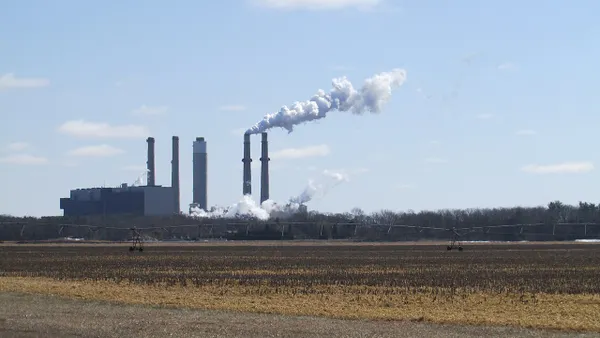A federal appeals court on Friday dismissed a lawsuit brought by a utility-supported organization that sought to overturn the Environmental Protection Agency’s revised 2021 Cross-State Air Pollution Update Rule for ozone.
The U.S. Court of Appeals for the District of Columbia Circuit rejected arguments by the Midwest Ozone Group that the EPA failed to appropriately assess how pollution from upwind sources, such as coal-fired power plants, would affect ozone levels in downwind states.
The EPA used a four-step method to evaluate obligations under the Clean Air Act’s Good Neighbor Provision, which requires upwind states to limit their emissions if they prevent downwind states from meeting air quality standards, according to the decision.
EPA’s methodology incorporated photochemical modeling, the Midwest Ozone Group’s preferred technique, as the “foundation for its projections” and then layered an additional mathematical function, called linear interpolation, over the original projected data to generate updated 2021 ozone concentrations, the court said.
EPA then performed additional data analysis by checking its 2021 interpolated projection against a sensitivity analysis and engineering analytics approach, the court said.
“EPA appears to have chosen analytical techniques rationally connected to the Revised Rule and appropriately explained its use of the linear interpolation and subsequent methods for establishing the Revised Rule,” the court said.
The tools produced consistent results and the Midwest Ozone Group has not proven that states would have been regulated differently under any other method, “including a purely photochemical modeling approach,” it said.
The group failed to establish that the agency’s linear interpolation method was oversimplified or that the EPA produced unreasonable results, the court said.
The Midwest Ozone Group didn’t return a request for comment.
Its members include Ameren, American Electric Power, Associated Electric Cooperative, Buckeye Power, Duke Energy, East Kentucky Power Cooperative and FirstEnergy.
The group’s main goal is “to work with policymakers in evaluating air quality policies by encouraging sound science.”
Separately, the EPA is proposing to tighten its regional ozone transport rule, which could speed up the pace of power plant retirements and threaten grid reliability, according to major grid operators, at least a dozen state utility commissions, rural and public power utilities, and a group of Republican attorneys general.
The EPA aims to issue a final rule this month, according to the Office of Information and Regulatory Affairs’ regulatory agenda.















